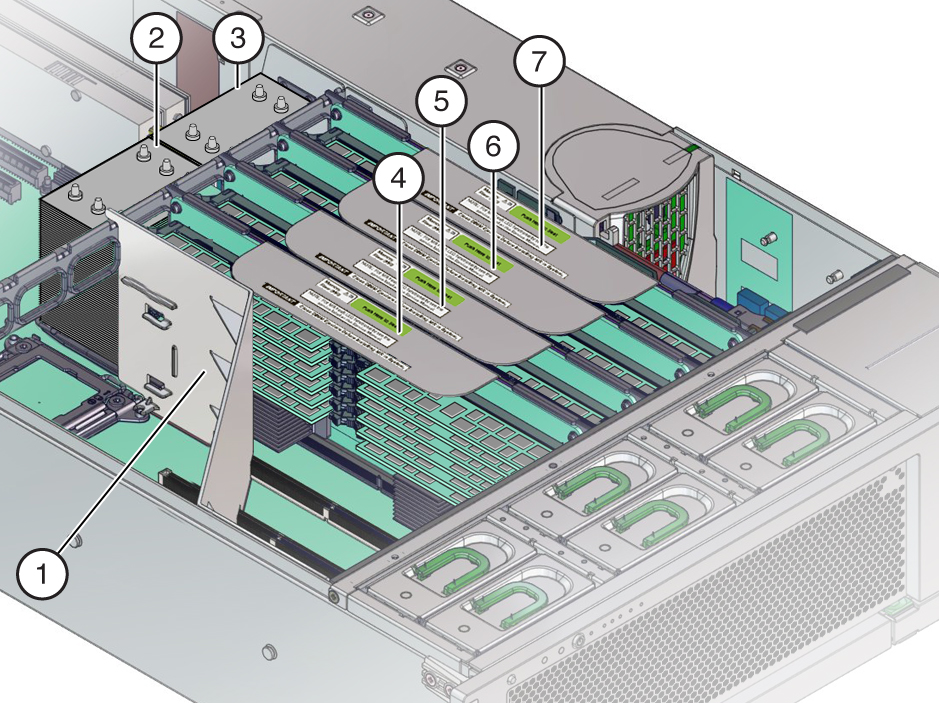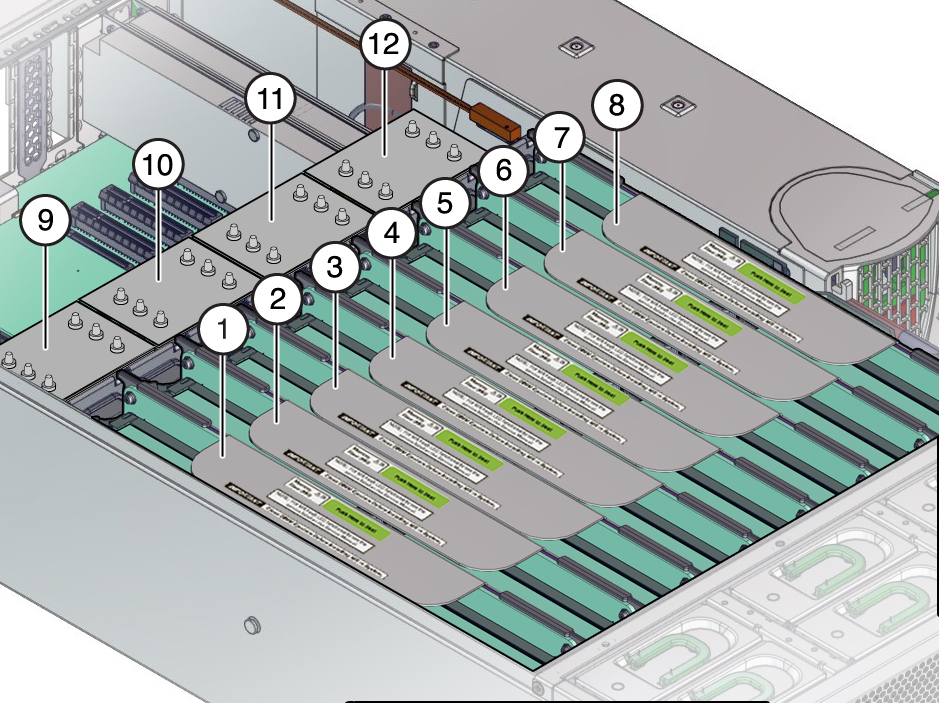Processor Subsystem
The Oracle Server X5-4 uses the Intel Xeon E7-8895 v3 18-core 2.6 GHz processor and supports two CPU-based configurations: a two-CPU configuration and a four-CPU configuration.
Two-CPU Configuration
Servers with two CPUs have CPUs and heatsinks in sockets 0 and 1 and CPU cover plates installed in sockets 2 and 3. This configuration requires four memory riser cards and an air baffle to control airflow for maximum cooling. The following illustration shows the components in a two-CPU server configuration.

|
For more information, see Two-CPU Block Diagram.
Four-CPU Configuration
In addition to four CPUs, this configuration requires eight memory riser cards. The following illustration shows the components in a four-CPU server configuration.

|
The four-CPU configuration offers a greater level of resiliency with redundant QPI interconnects that allow working CPUs to route around a disabled CPU as the system starts.
For more information, see Four-CPU Block Diagram.